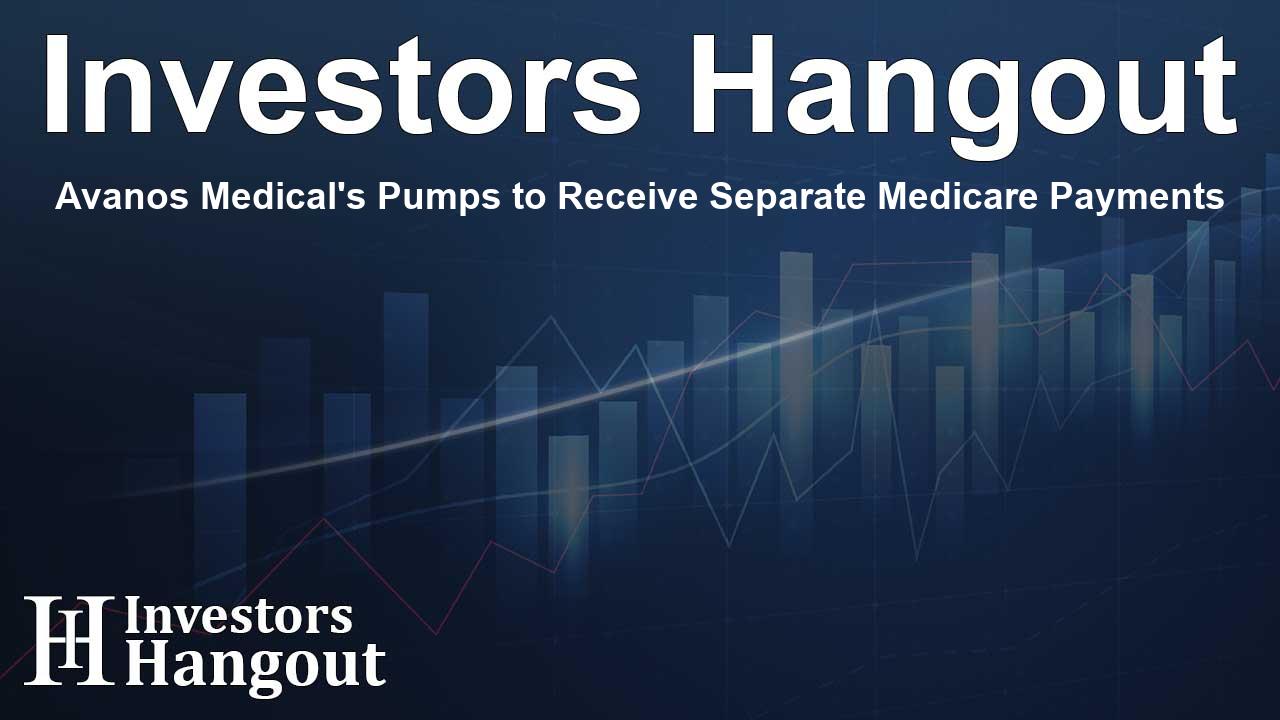Avanos Medical's Pumps to Receive Separate Medicare Payments

Advancements in Medicare Payment Policies for Non-Opioid Treatments
Avanos Medical, Inc. (NYSE: AVNS) has made significant strides in enhancing pain management options. Recently, the Centers for Medicare and Medicaid Services (CMS) announced updates that will impact how non-opioid treatments are reimbursed. This new policy will take effect on January 1, 2025, allowing hospitals and surgical centers greater flexibility in managing pain for their patients without relying heavily on opioids.
Understanding the NOPAIN Act
The Non-Opioids Prevent Addiction in the Nation (NOPAIN) Act was established to increase accessibility to effective pain management solutions. By providing Medicare reimbursement for qualifying non-opioid drugs and devices, this legislative move aims to create safer pain relief alternatives in outpatient and surgical settings. As part of this initiative, both the ON-Q elastomeric infusion pump and the ambIT disposable electronic infusion pump have been identified as eligible for separate Medicare payments.
The Impact of New HCPCS Codes
The classification under the Healthcare Common Procedure Coding System (HCPCS) is pivotal for reimbursement processes. With each infusion system receiving its own unique HCPCS code, hospitals and ambulatory surgical centers that adopt these devices can claim additional Medicare payments alongside existing reimbursement for outpatient services. This opportunity paves the way for broader implementation of advanced pain management technologies.
Extra Reimbursement for Enhancing Patient Care
Under the new CMS rule, the ON-Q infusion system and the ambIT infusion system will allow facilities to receive an additional payment limit of up to $2,284.98 each. This is intended to encourage healthcare providers to utilize these clinically proven devices. From January 1, 2025, these codes can be utilized in claim submissions for qualifying services.
Significance of ON-Q and ambIT Pumps
The inclusion of Avanos Medical’s ON-Q and ambIT systems marks a transformative step in postoperative care. These infusion delivery systems have been proven through clinical trials to significantly lower opioid consumption following surgery. Continuous delivery of local anesthetic via these pumps provides targeted pain relief, creating a more comfortable recovery experience for patients.
Statements from Leadership
Michael Greiner, the interim CEO of Avanos Medical, expressed his enthusiasm regarding the inclusion of their products under the NOPAIN Act. He emphasized the company's commitment to providing innovative non-opioid therapies aimed at reducing opioid use post-surgery. This dedication aligns with broader healthcare goals of enhancing patient safety and reducing dependency on opioids.
Looking Ahead: Continuous Evaluation of Alternatives
The NOPAIN Act mandates that the CMS review and assess additional eligible non-opioid products on a yearly basis over a three-year period, concluding on December 31, 2027. This ongoing evaluation will ensure that the best available therapies are accessible to Medicare beneficiaries, supporting the overall goal of minimizing opioid usage.
About Avanos Medical
Avanos Medical, operating under the stock ticker NYSE: AVNS, is committed to creating medical devices that genuinely enhance patient recovery. The company focuses on addressing significant healthcare concerns, including delivering nutrition and reducing opioid use post-surgery, while developing innovative solutions marketed globally across various healthcare segments. In doing so, Avanos continues to solidify its position as a leading provider of pain management solutions and expects to contribute positively to the future of healthcare.
Frequently Asked Questions
What is the NOPAIN Act?
The NOPAIN Act is legislation aimed at increasing patient access to non-opioid pain management solutions by providing separate Medicare payments for qualifying non-opioid drugs and devices.
When will these new payment policies go into effect?
The new payment policies under the NOPAIN Act will go into effect on January 1, 2025, allowing for separate Medicare reimbursement for eligible non-opioid treatments.
Which products from Avanos Medical are affected by these changes?
The ON-Q elastomeric infusion pump and the ambIT disposable electronic infusion pump are both eligible for separate payment under the NOPAIN Act.
How will the reimbursement for these pumps be structured?
Both infusion systems will allow healthcare providers to claim an additional reimbursement limit of up to $2,284.98 from Medicare, alongside their regular outpatient payments.
What is the significance of the unique HCPCS codes?
The unique HCPCS codes assigned to ON-Q and ambIT allow healthcare facilities to submit claims for additional reimbursement, facilitating a more robust utilization of these crucial pain management tools.
About Investors Hangout
Investors Hangout is a leading online stock forum for financial discussion and learning, offering a wide range of free tools and resources. It draws in traders of all levels, who exchange market knowledge, investigate trading tactics, and keep an eye on industry developments in real time. Featuring financial articles, stock message boards, quotes, charts, company profiles, and live news updates. Through cooperative learning and a wealth of informational resources, it helps users from novices creating their first portfolios to experts honing their techniques. Join Investors Hangout today: https://investorshangout.com/
Disclaimer: The content of this article is solely for general informational purposes only; it does not represent legal, financial, or investment advice. Investors Hangout does not offer financial advice; the author is not a licensed financial advisor. Consult a qualified advisor before making any financial or investment decisions based on this article. The author's interpretation of publicly available data shapes the opinions presented here; as a result, they should not be taken as advice to purchase, sell, or hold any securities mentioned or any other investments. The author does not guarantee the accuracy, completeness, or timeliness of any material, providing it "as is." Information and market conditions may change; past performance is not indicative of future outcomes. If any of the material offered here is inaccurate, please contact us for corrections.